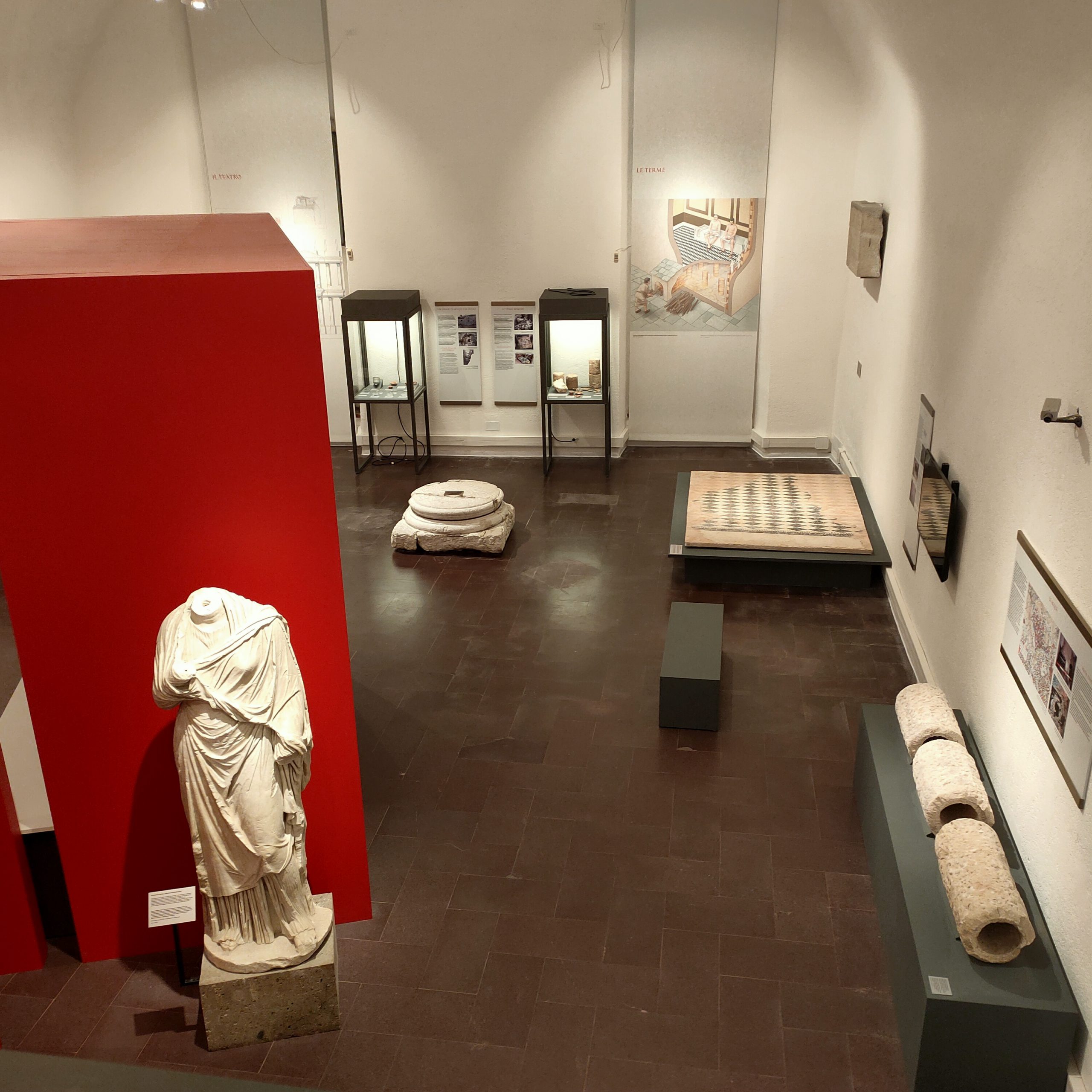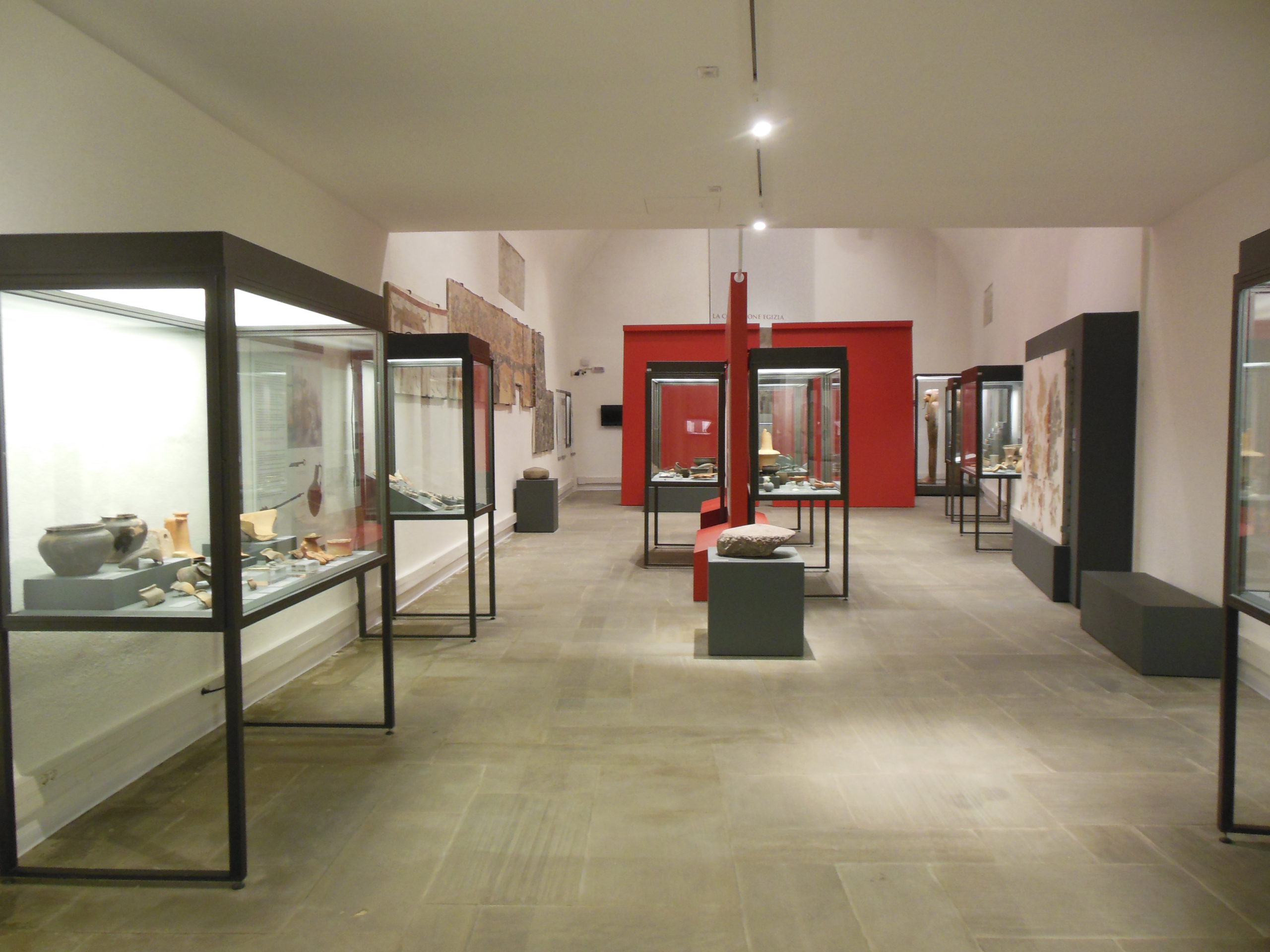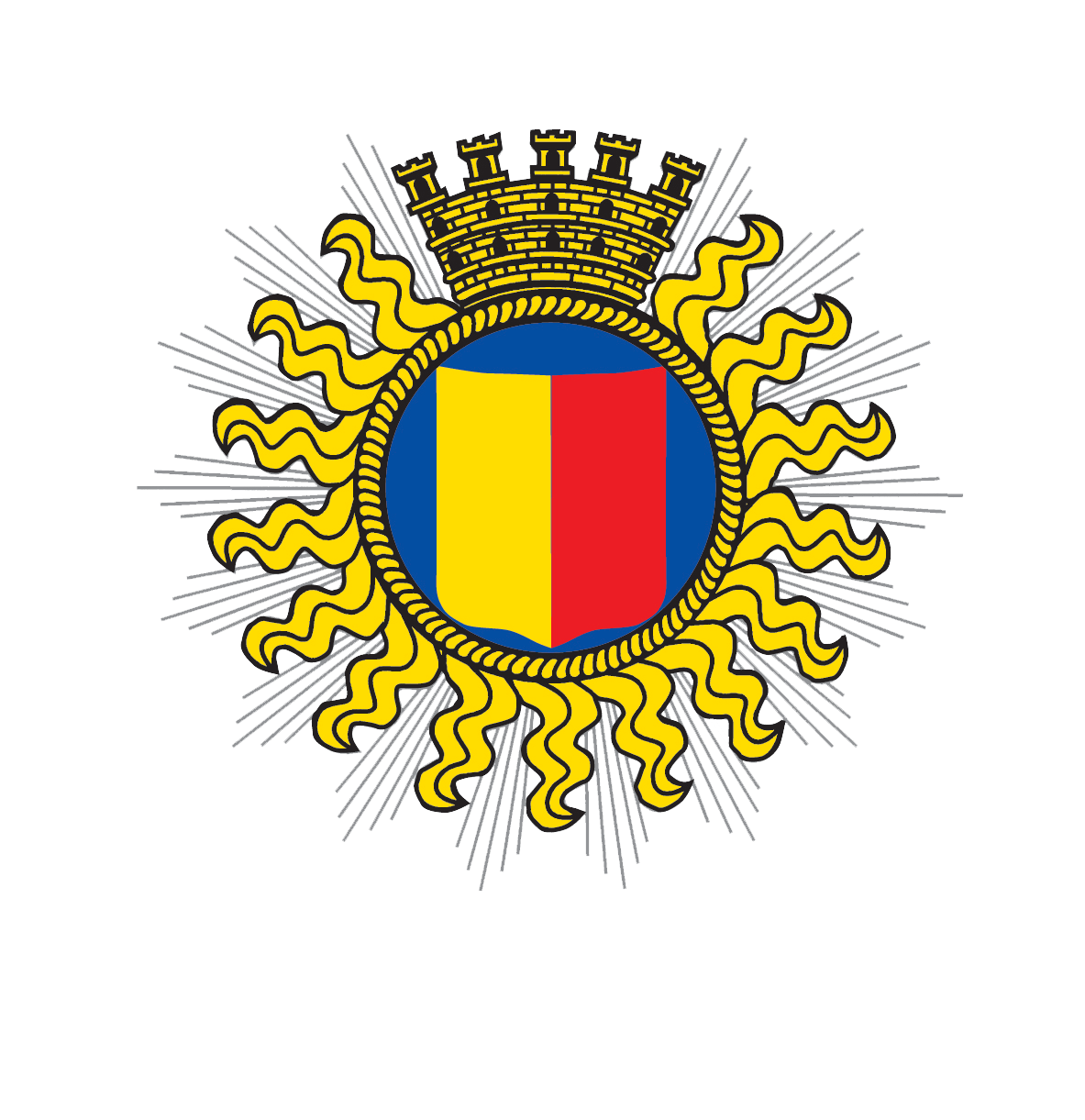Discovering Bergomum
Two rooms on the ground floor of the Museum host the finds from the Roman city, coming from the archaeological excavations in the Upper Town. Visitors can also use the interactive table in the first room to discover the main sites of Bergomum.

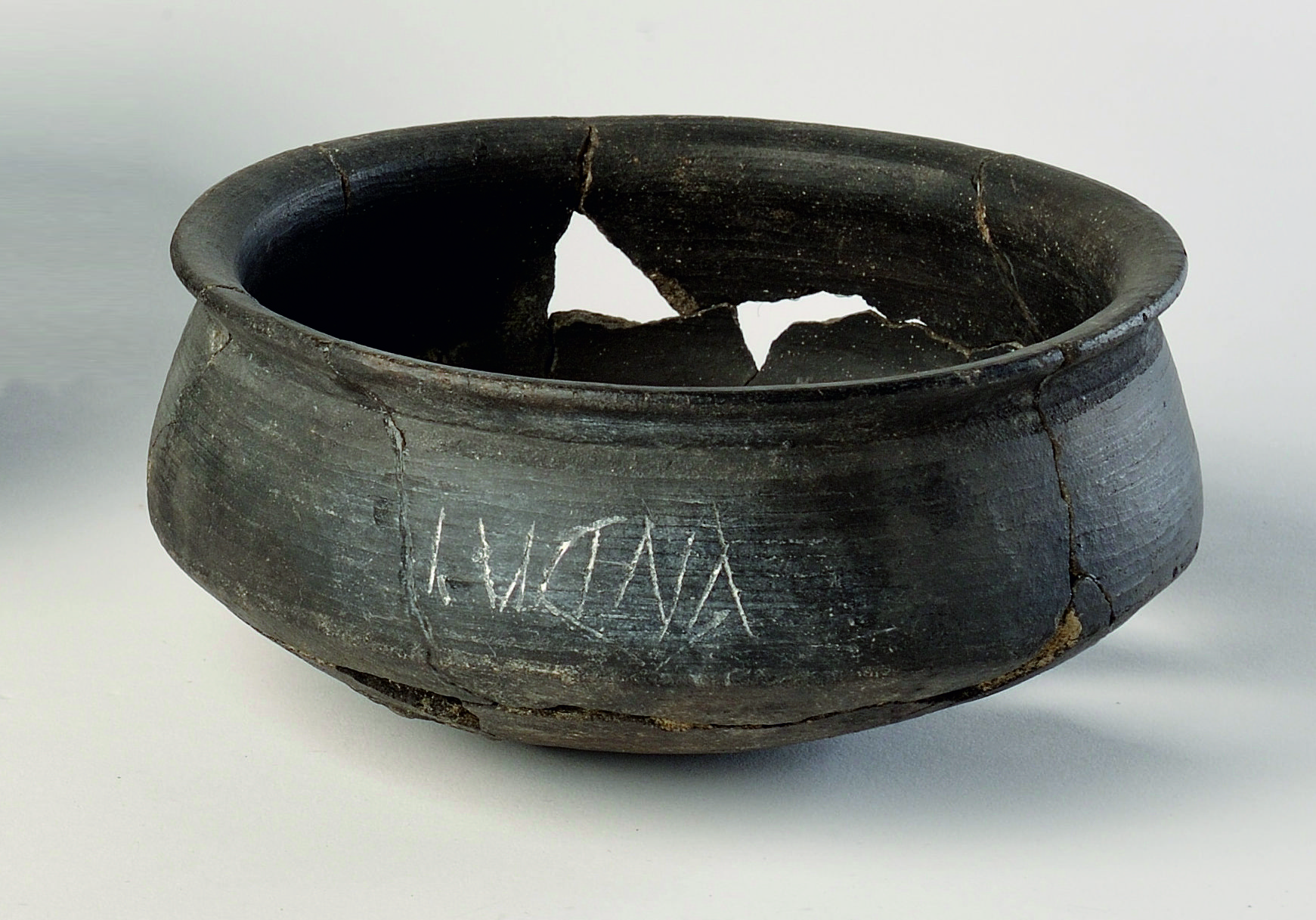
The first inhabitants of the hill
At the time of the ancient Romans Bergamo was an important city, located in a strategic position between the mountains and the plain, the focal point of an extensive area crossed by trade routes and with abundant raw materials.
The cemeteries
The graveyards were placed outside the city wall, along the roads leading to the main nearby towns, Milan, Brescia and Como. The most important of the three cemeteries discovered in Bergomum is that on what is now Via Borgo Canale, on the road which led to Como.
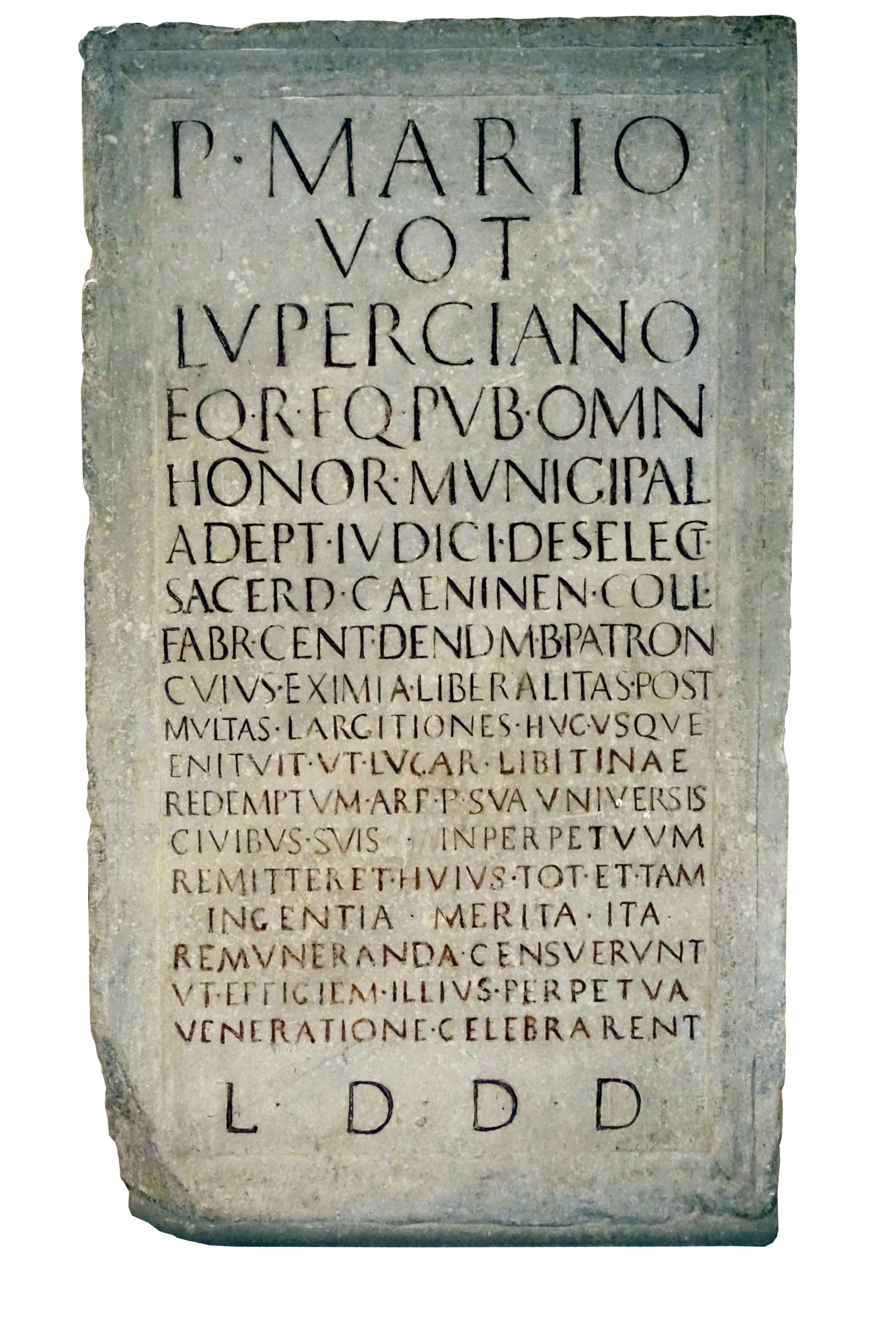
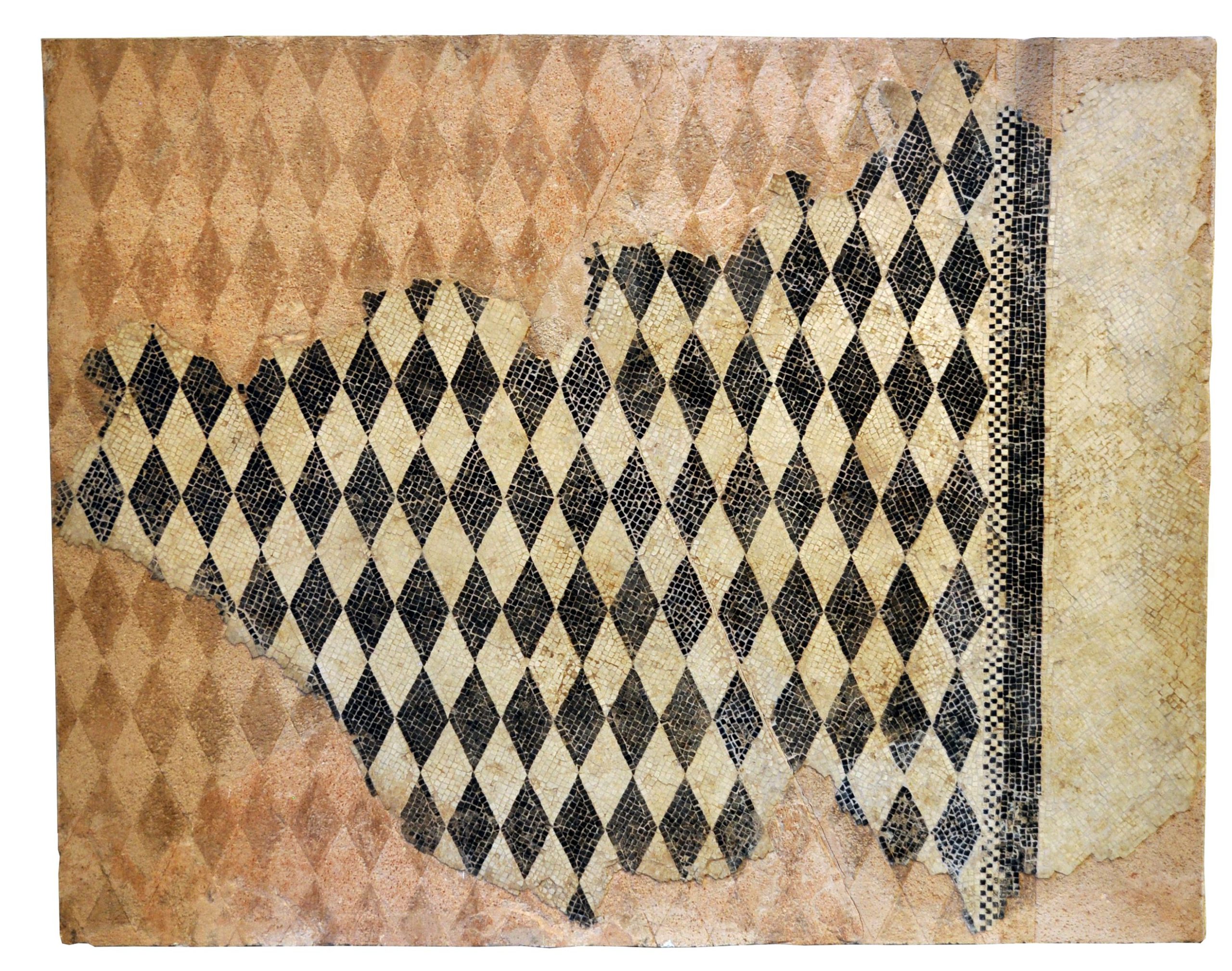
The city roads
Like in all Roman cities, in Bergomum there was the typical, although irregular, road plan based on the intersection between the decumanus maximus, which ran southeast/northwest beneath modern Via Colleoni and Via Gombito, and the cardo maximus, under Via San Lorenzo and Via Mario Lupo.
Public entertainment buildings
The entertainment quarter – with the theatre and the amphitheatre – was in the western part of the town, at the foot of S. Giovanni hill, very close to Colle Aperto. In Bergomum’s amphitheatre the ludi gladiatorii, the famous gladiatorial combats, were held. The fight between two gladiators, Pinnesis and Valerius Valerianus, is recalled in an epigraph discovered on top of S. Giovanni hill. Not far, in Piazza Mascheroni, fragments of marble decorations belonging to the theatre building were found.

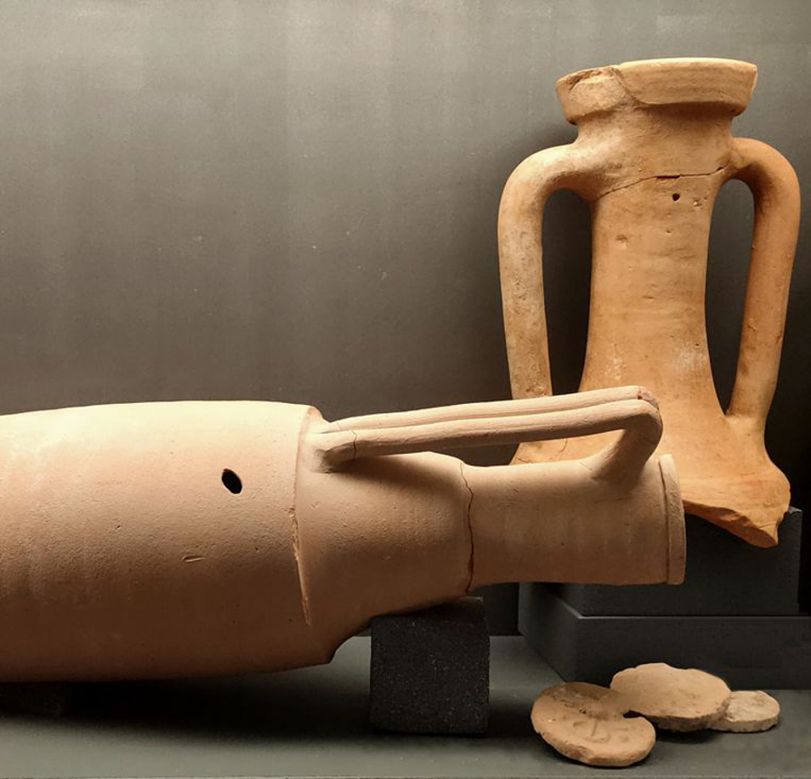
The forum
The forum, the main square of the Roman city, was located near Piazza Vecchia. It was the centre of political, religious and commercial life. Bergomum was part of an extensive trade network linked to the Mediterranean and to the areas north of the Alps, as proven by the imported amphorae and pottery found in various parts of the city.
An honorary inscription, dating back to the mid-1st-mid-2nd century AD, records that the portrait of an important citizen of Bergomum, Publius Marius Lupercianus, was placed on public display by order of the decurions, probably in the forum or very close to it.
Rituals and cults
While the official Roman religion – with dedications to Jupiter, Juno, Minerva, Diana and Neptune – was widespread in the countryside around Bergomum, little is known about the deities worshipped in the city. The altar offered to Jupiter and all the gods discovered at the Rocca maybe points to the existence of a pluralistic cult.
On the western slope of S. Giovanni hill, in Via San Salvatore, there was a fountain with a big basin, in which 149 coins (dating back to the 3rd-4th century AD), 5 oil lamps and fragments of glass vessels were discovered. These objects were probably part of an offering to a deity connected with water.
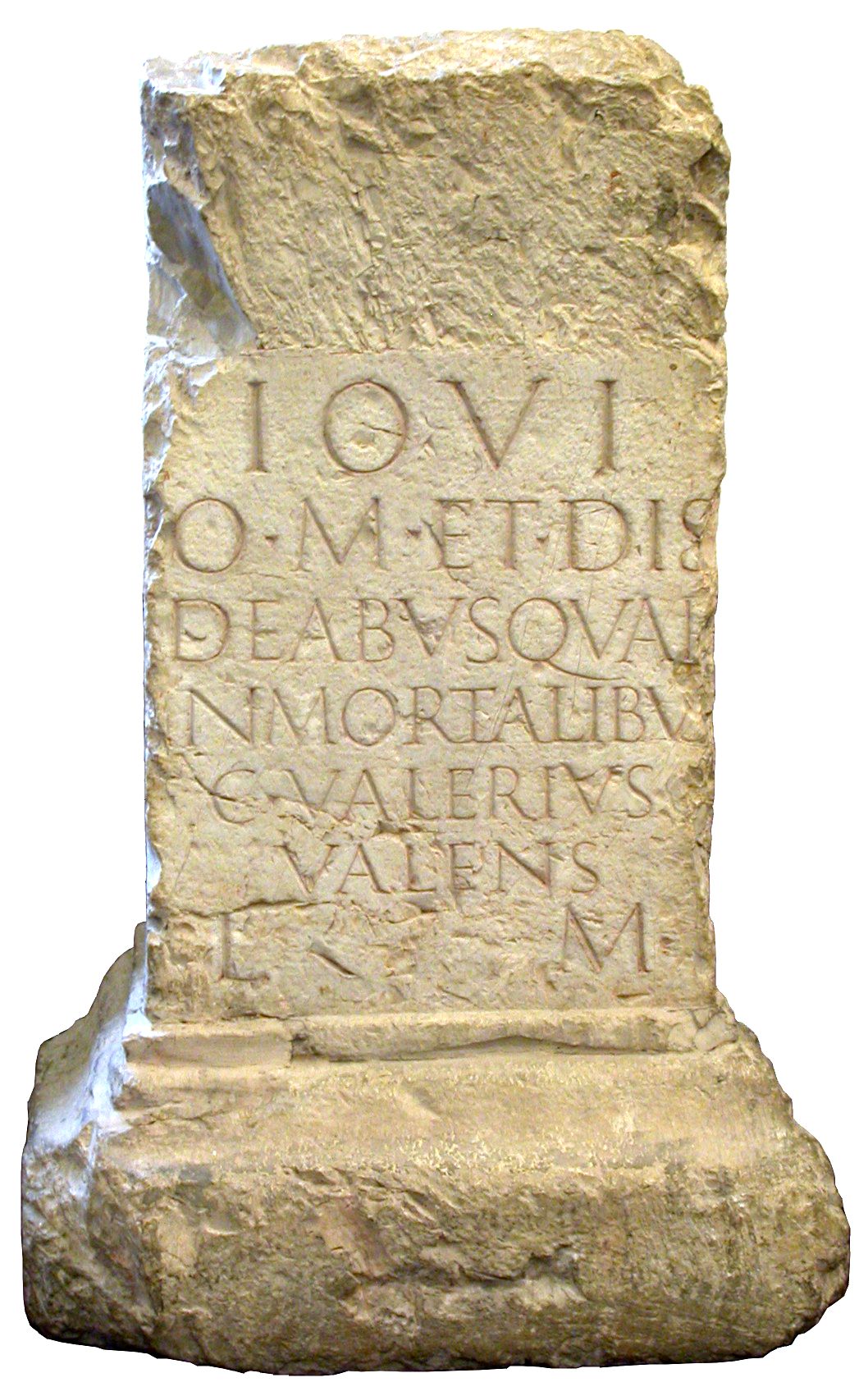
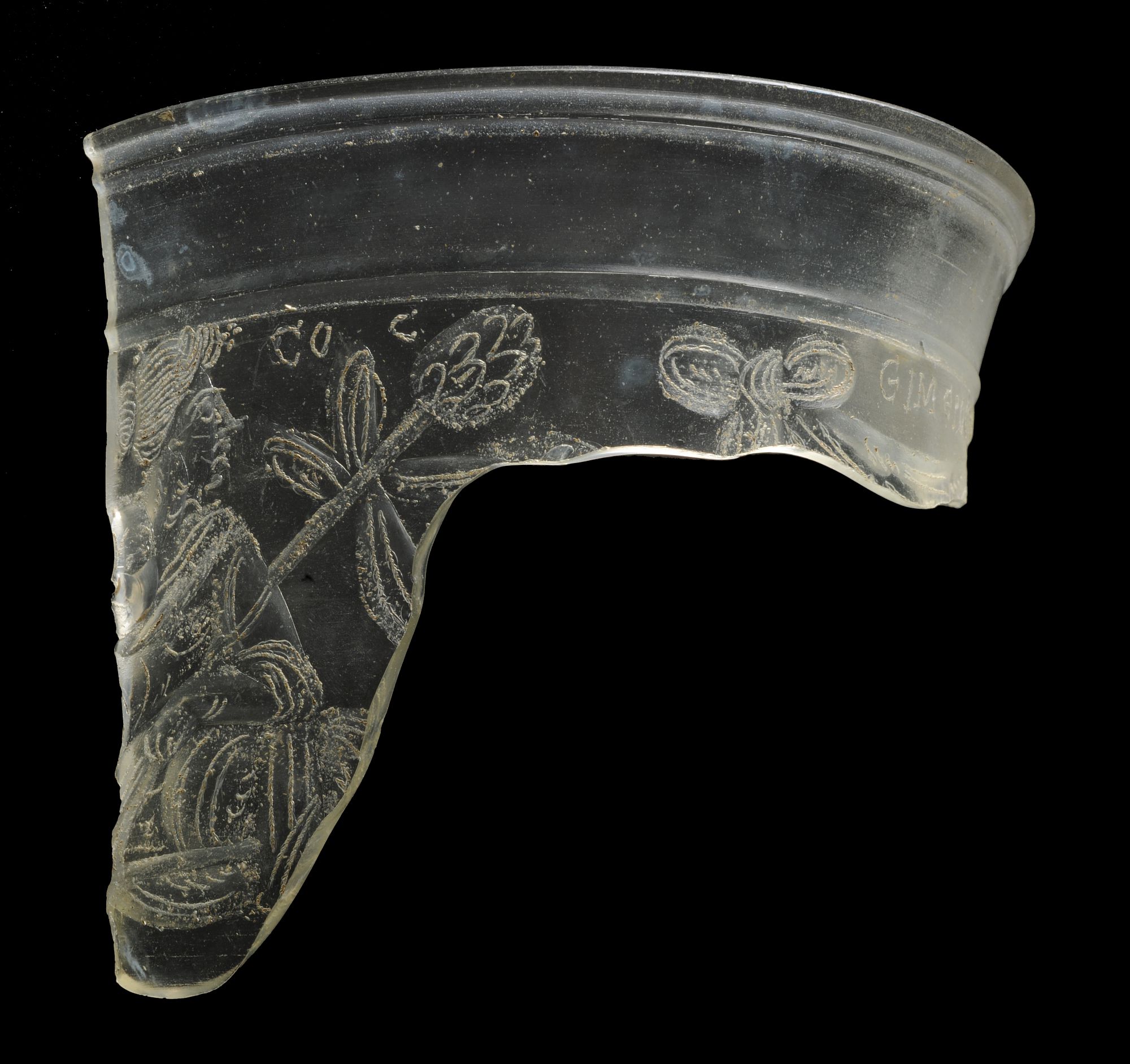
Water supply
The water provision system designed by the Romans in Bergomum guaranteed an efficient and comprehensive supply; very likely, in the medieval period the main components of the Roman network were still operative.
There were public baths in town, located in Piazza Mercato del Fieno. Here numerous small brick pillars (pilae), which held up the floor for the heating system, were discovered. Moreover, an inscription found near the Cathedral mentions Lucius Cluvienus Cilo, who donated the public baths and a stretch of aqueduct.
The town houses
Ancient Bergomum had residential areas where the wealthiest citizens lived in prestigious domus. Terracing work to build these houses began in the second half of the 1st century BC, but the main building expansion took place in the 1st and 2nd century AD.
These Roman residences were adapted to the shape of the hillside, with basement rooms and several floors arranged on terraces at different heights. Houses were equipped with plumbing and heating systems. The main rooms had richly frescoed walls and mosaic floors with geometric and figurative motifs. Furnishings were essential but luxurious, as shown, among other precious finds, by a Greek marble table leg (trapezophorum) discovered in a domus in via San Lorenzo.
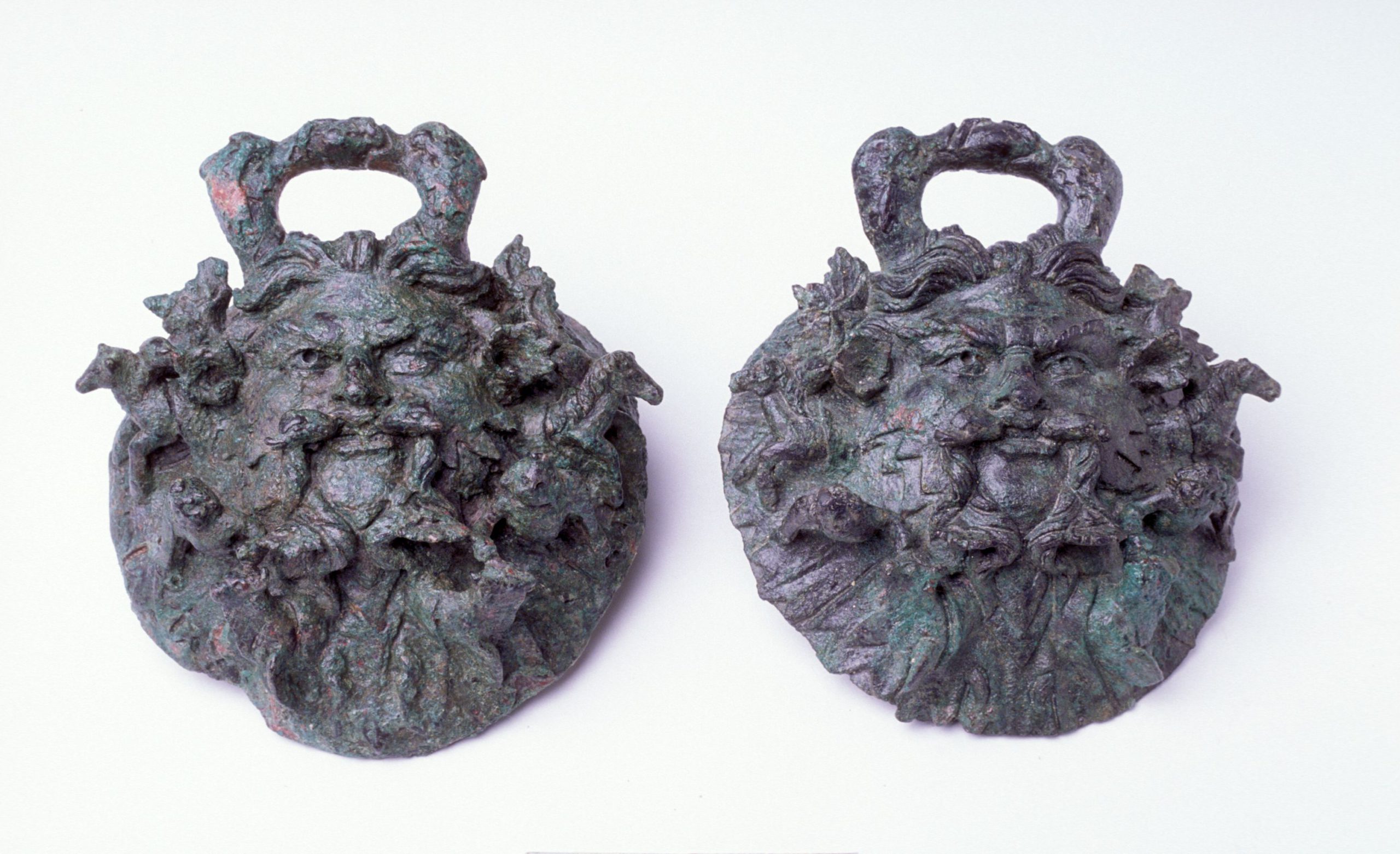
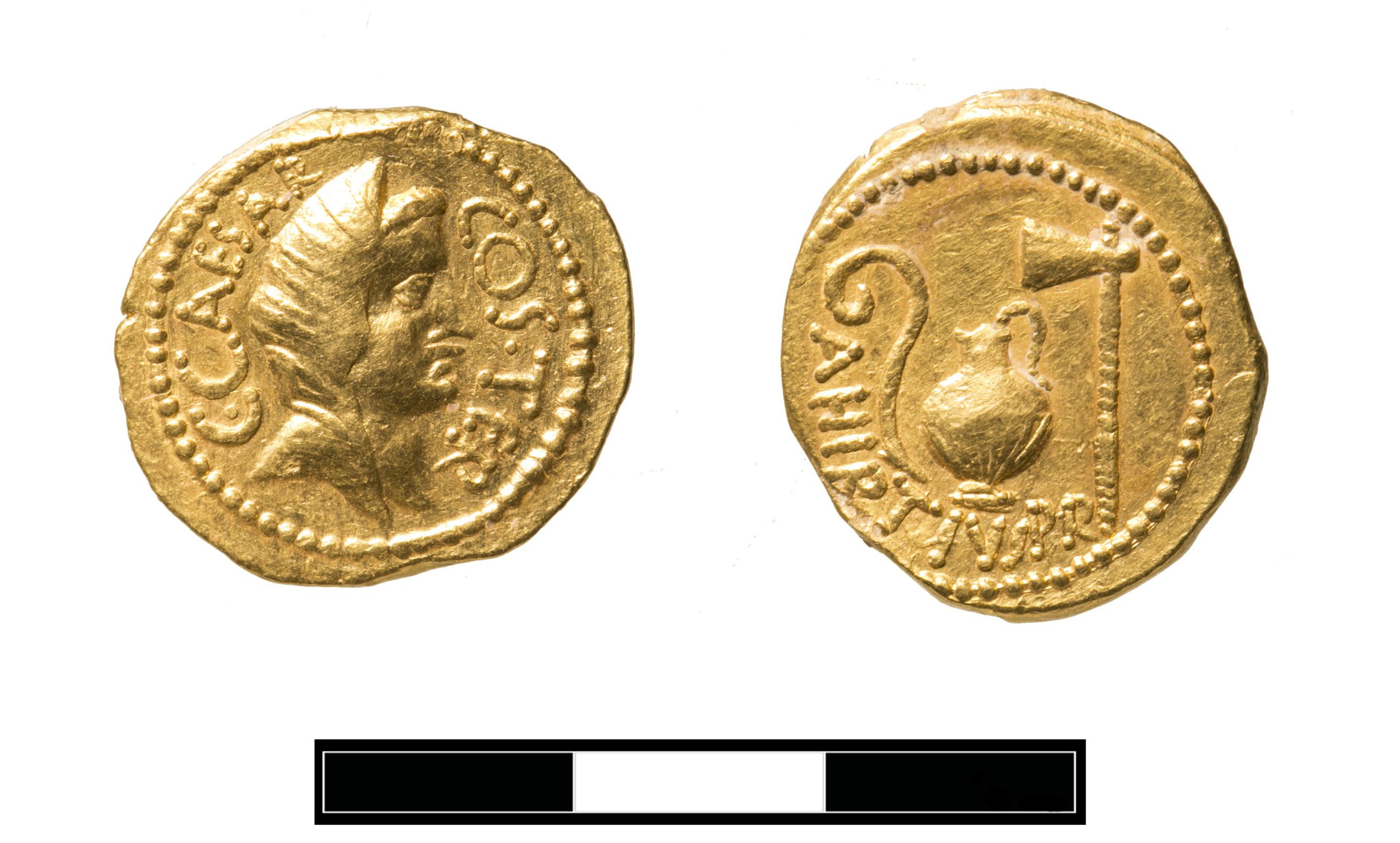
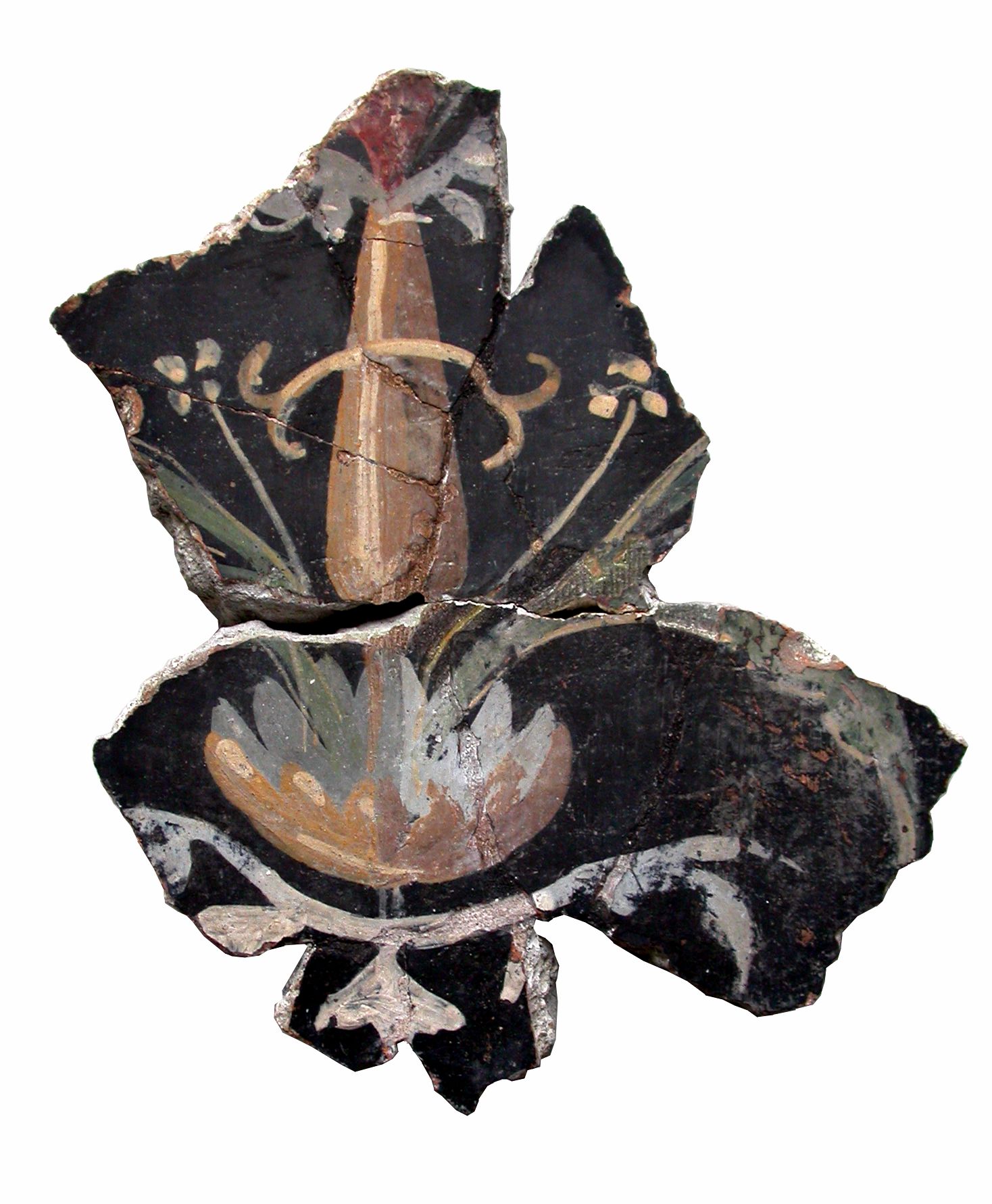
The best known domus of Bergomum are the one in Via Arena-Via Mayr, the house discovered in Vicolo Aquila Nera, right behind the Civic Library, and that in Via San Lorenzo, which partly became a blacksmith’s store around the 3rd or 4th century AD.
